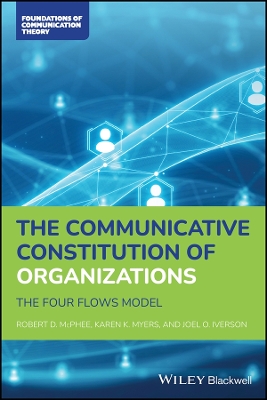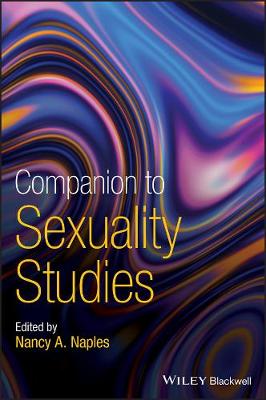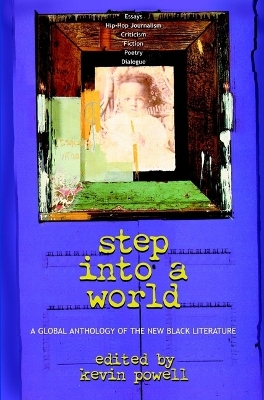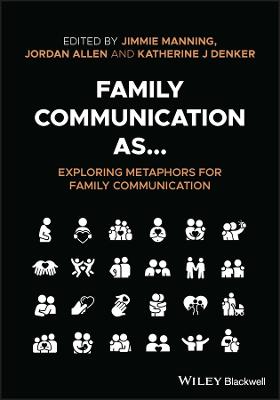Communicative Constitution of Organizations
 -10%
portes grátis
-10%
portes grátis
Communicative Constitution of Organizations
The Four Flows Mode
McPhee, Robert D.; Iverson, Joel O.; Myers, Karen
John Wiley and Sons Ltd
05/2025
224
Mole
9781119591924
Pré-lançamento - envio 15 a 20 dias após a sua edição
Descrição não disponível.
Preface viii
Acknowledgments xiii
1 Introduction 1
1.1 Theoretical Grounding 2
1.1.1 Key Issues 6
1.2 Agency and Human Centrality to Human Social Systems 6
1.3 Materiality and Sociomateriality of Communication and Organizations 8
1.4 Power/Domination 10
2 Communication and Structuration Theory 12
2.1 Structuration Theory Tenets with Reference to Organizations 13
2.2 Structure: Rules and Resources 13
2.3 Systems 15
2.4 Agency 16
2.5 Duality of Structure 22
2.6 Modalities 23
2.7 Distanciation 24
2.8 Communication and System Structuring 27
3 Communicative Constitution 31
3.1 Structuration Theory and the Constitution of Organizing 32
3.2 The Structurational Hermeneutic 34
3.3 Conlocutions 36
3.4 Constitution 37
3.4.1 Constitution of Signs 38
3.4.2 Constitution of Agents 39
3.4.3 Constitution of Organizations 41
3.5 The Modalities- An Augmented Formulation 43
4 The Four Flows Model 49
4.1 Flow and Constitution 49
4.2 Flows with Agency 52
4.3 The Materiality of Flows 54
4.4 Flow as Organizational and Communicative 55
4.5 Ways That Flow Departs from Communication 57
4.6 The Four Flows Model 60
4.7 Conclusion 64
5 Membership Negotiation 66
5.1 Moving from Outsiders to Insiders: Socialization Toward Membership 69
5.2 Previous Experiences and Their Relation to Membership Negotiation 73
5.3 Ongoing Membership Negotiation 76
5.4 Members' Relationship to the Organization 78
5.5 Materiality 79
5.6 Constitutive Effects 80
5.7 Drawing on Membership Negotiation 81
5.8 Conclusion 82
6 Self-Structuring 84
6.1 Type 1: Formal Structuring 87
6.2 Organizational Goals 90
6.3 Organizational Boundaries 92
6.4 Rules, Goals, and Other Formal Structuring 93
6.5 Emergence of Ideas of (Formal) Structuring 95
6.6 How Formal Structuring Constitutes Organizations 96
6.7 Formal Structuring and the Four Dimensions 97
6.8 Type 2: Information and Communication Technology 98
6.9 Bases of ICT 99
6.10 How the ICT System Constitutes the Organization 102
6.11 ITC and the Four Dimensions 107
6.12 Type 3: Culture 107
6.13 How Culture Constitutes Organizations 112
6.14 Culture and the Four Dimensions 113
6.15 Conclusion 113
7 Activity Coordination 115
7.1 Research on Coordination 117
7.2 HRO Activity Coordination 123
7.3 Supervisor-Subordinate Activity Coordination and Transtruction 125
7.4 Materiality 127
7.5 Activity Coordination between Coworkers and Transtruction 128
7.6 Conclusion 130
8 Institutional Positioning 131
8.1 Institutions and Organizations 132
8.2 Positioning by Individual Agents 134
8.3 Four Facets of Institutional Positioning 136
8.4 Organizational Identity 137
8.5 Social System Actant 139
8.6 Organization to Individuals 140
8.7 Organization to Organizations in the Institutional System[s] 141
8.8 Transtructions 142
8.9 Corporate Social Responsibility 144
8.10 Crisis Communication 146
8.11 Conclusion 148
9 Confluence of the Four Flows 149
9.1 The Confluence of the Flows 150
9.2 Flows as Foundational Theoretic Constructs for Organizational Communication and CCO Analysis 152
9.3 Strains and Contradictions, or Contraventions, Among/Within Flows 153
9.4 Confluence of the Flows at Micro, Meso, and Macro Levels 156
9.5 Deep Structures/Currents and the Confluence of the Flows 160
9.6 Conclusion 164
10 Contributions to the Ongoing CCO Debates 166
10.1 Confluence with Luhmann's Theory 168
10.2 Confluence with The Montreal School 174
11 Conclusion 180
11.1 Summary of Key Insights 180
11.2 Resources for Practical Appropriation of CCO Thought 182
References 184
Index 203
Acknowledgments xiii
1 Introduction 1
1.1 Theoretical Grounding 2
1.1.1 Key Issues 6
1.2 Agency and Human Centrality to Human Social Systems 6
1.3 Materiality and Sociomateriality of Communication and Organizations 8
1.4 Power/Domination 10
2 Communication and Structuration Theory 12
2.1 Structuration Theory Tenets with Reference to Organizations 13
2.2 Structure: Rules and Resources 13
2.3 Systems 15
2.4 Agency 16
2.5 Duality of Structure 22
2.6 Modalities 23
2.7 Distanciation 24
2.8 Communication and System Structuring 27
3 Communicative Constitution 31
3.1 Structuration Theory and the Constitution of Organizing 32
3.2 The Structurational Hermeneutic 34
3.3 Conlocutions 36
3.4 Constitution 37
3.4.1 Constitution of Signs 38
3.4.2 Constitution of Agents 39
3.4.3 Constitution of Organizations 41
3.5 The Modalities- An Augmented Formulation 43
4 The Four Flows Model 49
4.1 Flow and Constitution 49
4.2 Flows with Agency 52
4.3 The Materiality of Flows 54
4.4 Flow as Organizational and Communicative 55
4.5 Ways That Flow Departs from Communication 57
4.6 The Four Flows Model 60
4.7 Conclusion 64
5 Membership Negotiation 66
5.1 Moving from Outsiders to Insiders: Socialization Toward Membership 69
5.2 Previous Experiences and Their Relation to Membership Negotiation 73
5.3 Ongoing Membership Negotiation 76
5.4 Members' Relationship to the Organization 78
5.5 Materiality 79
5.6 Constitutive Effects 80
5.7 Drawing on Membership Negotiation 81
5.8 Conclusion 82
6 Self-Structuring 84
6.1 Type 1: Formal Structuring 87
6.2 Organizational Goals 90
6.3 Organizational Boundaries 92
6.4 Rules, Goals, and Other Formal Structuring 93
6.5 Emergence of Ideas of (Formal) Structuring 95
6.6 How Formal Structuring Constitutes Organizations 96
6.7 Formal Structuring and the Four Dimensions 97
6.8 Type 2: Information and Communication Technology 98
6.9 Bases of ICT 99
6.10 How the ICT System Constitutes the Organization 102
6.11 ITC and the Four Dimensions 107
6.12 Type 3: Culture 107
6.13 How Culture Constitutes Organizations 112
6.14 Culture and the Four Dimensions 113
6.15 Conclusion 113
7 Activity Coordination 115
7.1 Research on Coordination 117
7.2 HRO Activity Coordination 123
7.3 Supervisor-Subordinate Activity Coordination and Transtruction 125
7.4 Materiality 127
7.5 Activity Coordination between Coworkers and Transtruction 128
7.6 Conclusion 130
8 Institutional Positioning 131
8.1 Institutions and Organizations 132
8.2 Positioning by Individual Agents 134
8.3 Four Facets of Institutional Positioning 136
8.4 Organizational Identity 137
8.5 Social System Actant 139
8.6 Organization to Individuals 140
8.7 Organization to Organizations in the Institutional System[s] 141
8.8 Transtructions 142
8.9 Corporate Social Responsibility 144
8.10 Crisis Communication 146
8.11 Conclusion 148
9 Confluence of the Four Flows 149
9.1 The Confluence of the Flows 150
9.2 Flows as Foundational Theoretic Constructs for Organizational Communication and CCO Analysis 152
9.3 Strains and Contradictions, or Contraventions, Among/Within Flows 153
9.4 Confluence of the Flows at Micro, Meso, and Macro Levels 156
9.5 Deep Structures/Currents and the Confluence of the Flows 160
9.6 Conclusion 164
10 Contributions to the Ongoing CCO Debates 166
10.1 Confluence with Luhmann's Theory 168
10.2 Confluence with The Montreal School 174
11 Conclusion 180
11.1 Summary of Key Insights 180
11.2 Resources for Practical Appropriation of CCO Thought 182
References 184
Index 203
Este título pertence ao(s) assunto(s) indicados(s). Para ver outros títulos clique no assunto desejado.
Four Flows Model; Four Flows Model textbook; Four Flows theory; Communicative Constitution of Organizations; CCO, Structuration Theory, organizational communication; communicative constitution, transtructions, conlocutions, agency, power, domination
Preface viii
Acknowledgments xiii
1 Introduction 1
1.1 Theoretical Grounding 2
1.1.1 Key Issues 6
1.2 Agency and Human Centrality to Human Social Systems 6
1.3 Materiality and Sociomateriality of Communication and Organizations 8
1.4 Power/Domination 10
2 Communication and Structuration Theory 12
2.1 Structuration Theory Tenets with Reference to Organizations 13
2.2 Structure: Rules and Resources 13
2.3 Systems 15
2.4 Agency 16
2.5 Duality of Structure 22
2.6 Modalities 23
2.7 Distanciation 24
2.8 Communication and System Structuring 27
3 Communicative Constitution 31
3.1 Structuration Theory and the Constitution of Organizing 32
3.2 The Structurational Hermeneutic 34
3.3 Conlocutions 36
3.4 Constitution 37
3.4.1 Constitution of Signs 38
3.4.2 Constitution of Agents 39
3.4.3 Constitution of Organizations 41
3.5 The Modalities- An Augmented Formulation 43
4 The Four Flows Model 49
4.1 Flow and Constitution 49
4.2 Flows with Agency 52
4.3 The Materiality of Flows 54
4.4 Flow as Organizational and Communicative 55
4.5 Ways That Flow Departs from Communication 57
4.6 The Four Flows Model 60
4.7 Conclusion 64
5 Membership Negotiation 66
5.1 Moving from Outsiders to Insiders: Socialization Toward Membership 69
5.2 Previous Experiences and Their Relation to Membership Negotiation 73
5.3 Ongoing Membership Negotiation 76
5.4 Members' Relationship to the Organization 78
5.5 Materiality 79
5.6 Constitutive Effects 80
5.7 Drawing on Membership Negotiation 81
5.8 Conclusion 82
6 Self-Structuring 84
6.1 Type 1: Formal Structuring 87
6.2 Organizational Goals 90
6.3 Organizational Boundaries 92
6.4 Rules, Goals, and Other Formal Structuring 93
6.5 Emergence of Ideas of (Formal) Structuring 95
6.6 How Formal Structuring Constitutes Organizations 96
6.7 Formal Structuring and the Four Dimensions 97
6.8 Type 2: Information and Communication Technology 98
6.9 Bases of ICT 99
6.10 How the ICT System Constitutes the Organization 102
6.11 ITC and the Four Dimensions 107
6.12 Type 3: Culture 107
6.13 How Culture Constitutes Organizations 112
6.14 Culture and the Four Dimensions 113
6.15 Conclusion 113
7 Activity Coordination 115
7.1 Research on Coordination 117
7.2 HRO Activity Coordination 123
7.3 Supervisor-Subordinate Activity Coordination and Transtruction 125
7.4 Materiality 127
7.5 Activity Coordination between Coworkers and Transtruction 128
7.6 Conclusion 130
8 Institutional Positioning 131
8.1 Institutions and Organizations 132
8.2 Positioning by Individual Agents 134
8.3 Four Facets of Institutional Positioning 136
8.4 Organizational Identity 137
8.5 Social System Actant 139
8.6 Organization to Individuals 140
8.7 Organization to Organizations in the Institutional System[s] 141
8.8 Transtructions 142
8.9 Corporate Social Responsibility 144
8.10 Crisis Communication 146
8.11 Conclusion 148
9 Confluence of the Four Flows 149
9.1 The Confluence of the Flows 150
9.2 Flows as Foundational Theoretic Constructs for Organizational Communication and CCO Analysis 152
9.3 Strains and Contradictions, or Contraventions, Among/Within Flows 153
9.4 Confluence of the Flows at Micro, Meso, and Macro Levels 156
9.5 Deep Structures/Currents and the Confluence of the Flows 160
9.6 Conclusion 164
10 Contributions to the Ongoing CCO Debates 166
10.1 Confluence with Luhmann's Theory 168
10.2 Confluence with The Montreal School 174
11 Conclusion 180
11.1 Summary of Key Insights 180
11.2 Resources for Practical Appropriation of CCO Thought 182
References 184
Index 203
Acknowledgments xiii
1 Introduction 1
1.1 Theoretical Grounding 2
1.1.1 Key Issues 6
1.2 Agency and Human Centrality to Human Social Systems 6
1.3 Materiality and Sociomateriality of Communication and Organizations 8
1.4 Power/Domination 10
2 Communication and Structuration Theory 12
2.1 Structuration Theory Tenets with Reference to Organizations 13
2.2 Structure: Rules and Resources 13
2.3 Systems 15
2.4 Agency 16
2.5 Duality of Structure 22
2.6 Modalities 23
2.7 Distanciation 24
2.8 Communication and System Structuring 27
3 Communicative Constitution 31
3.1 Structuration Theory and the Constitution of Organizing 32
3.2 The Structurational Hermeneutic 34
3.3 Conlocutions 36
3.4 Constitution 37
3.4.1 Constitution of Signs 38
3.4.2 Constitution of Agents 39
3.4.3 Constitution of Organizations 41
3.5 The Modalities- An Augmented Formulation 43
4 The Four Flows Model 49
4.1 Flow and Constitution 49
4.2 Flows with Agency 52
4.3 The Materiality of Flows 54
4.4 Flow as Organizational and Communicative 55
4.5 Ways That Flow Departs from Communication 57
4.6 The Four Flows Model 60
4.7 Conclusion 64
5 Membership Negotiation 66
5.1 Moving from Outsiders to Insiders: Socialization Toward Membership 69
5.2 Previous Experiences and Their Relation to Membership Negotiation 73
5.3 Ongoing Membership Negotiation 76
5.4 Members' Relationship to the Organization 78
5.5 Materiality 79
5.6 Constitutive Effects 80
5.7 Drawing on Membership Negotiation 81
5.8 Conclusion 82
6 Self-Structuring 84
6.1 Type 1: Formal Structuring 87
6.2 Organizational Goals 90
6.3 Organizational Boundaries 92
6.4 Rules, Goals, and Other Formal Structuring 93
6.5 Emergence of Ideas of (Formal) Structuring 95
6.6 How Formal Structuring Constitutes Organizations 96
6.7 Formal Structuring and the Four Dimensions 97
6.8 Type 2: Information and Communication Technology 98
6.9 Bases of ICT 99
6.10 How the ICT System Constitutes the Organization 102
6.11 ITC and the Four Dimensions 107
6.12 Type 3: Culture 107
6.13 How Culture Constitutes Organizations 112
6.14 Culture and the Four Dimensions 113
6.15 Conclusion 113
7 Activity Coordination 115
7.1 Research on Coordination 117
7.2 HRO Activity Coordination 123
7.3 Supervisor-Subordinate Activity Coordination and Transtruction 125
7.4 Materiality 127
7.5 Activity Coordination between Coworkers and Transtruction 128
7.6 Conclusion 130
8 Institutional Positioning 131
8.1 Institutions and Organizations 132
8.2 Positioning by Individual Agents 134
8.3 Four Facets of Institutional Positioning 136
8.4 Organizational Identity 137
8.5 Social System Actant 139
8.6 Organization to Individuals 140
8.7 Organization to Organizations in the Institutional System[s] 141
8.8 Transtructions 142
8.9 Corporate Social Responsibility 144
8.10 Crisis Communication 146
8.11 Conclusion 148
9 Confluence of the Four Flows 149
9.1 The Confluence of the Flows 150
9.2 Flows as Foundational Theoretic Constructs for Organizational Communication and CCO Analysis 152
9.3 Strains and Contradictions, or Contraventions, Among/Within Flows 153
9.4 Confluence of the Flows at Micro, Meso, and Macro Levels 156
9.5 Deep Structures/Currents and the Confluence of the Flows 160
9.6 Conclusion 164
10 Contributions to the Ongoing CCO Debates 166
10.1 Confluence with Luhmann's Theory 168
10.2 Confluence with The Montreal School 174
11 Conclusion 180
11.1 Summary of Key Insights 180
11.2 Resources for Practical Appropriation of CCO Thought 182
References 184
Index 203
Este título pertence ao(s) assunto(s) indicados(s). Para ver outros títulos clique no assunto desejado.







